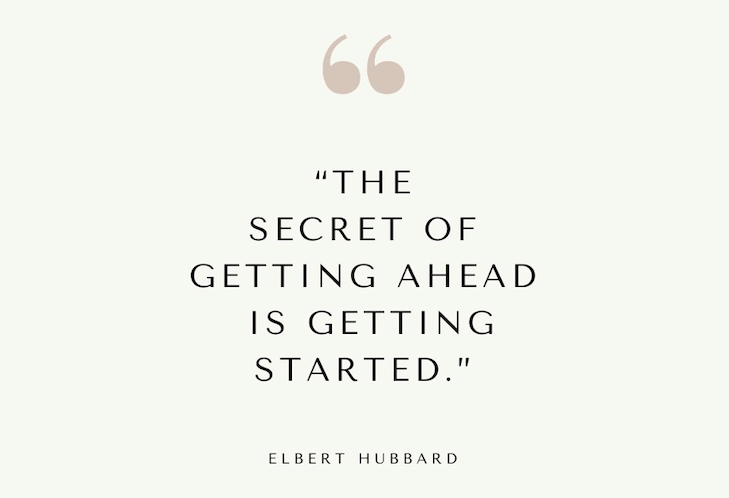
Books, magazines, and, yes, even your trusted nutritional therapist always have some handy, easy-to-follow advice to keep you healthy. “Just 5 minutes face yoga per day prevents wrinkles”, “get a flat tummy in just 10 minutes a day” or “a simple 30-minute walk at dawn ensures better sleep at night” … That’s 45 minutes before you have even started looking after the rest of your life or even cooked a meal. If you’re not a celebrity and cannot afford a chef, a personal trainer, and a housekeeper, it can be difficult to find the time.
Add to that the restrictiveness of advice – like “avoid all carbs”, “don’t eat sugar”, “don’t snack”, “avoid alcohol”, “count calories”-, which can seem impossible to stick to at all times, and you may feel inclined to not even start. Being healthy can seem like an impossible task.
Does it always have to be all or nothing? Can you, perhaps, be “healthy in the middle”?
First of all, the more effort you invest in your health, the better the result. Of course, some people live to 100 although they drink, smoke, live on crisps and chips, and the only body part they move is their finger on the remote.
Others seem to be doing everything right – perfect diet, exercise, fresh air, flossing, no stress – and still they are struck down by a heart attack at 54. We are not talking about those people. Some people are just lucky or unlucky.
But we know what is and isn’t good for us, and having a healthy, real food diet, cooking from scratch, putting in some regular exercise, getting out into fresh air, taking time for meditation or other relaxation, scheduling me-time does increase your chances of living a long and healthy life.
Having said that, you can also benefit from – even small – diet and lifestyle changes if you are not able to stick to all of the above at all times. And here’s why:
The Pareto Principle – aka the 80/20 Rule
The Pareto principle states that for many outcomes, roughly 80% of consequences come from 20% of the causes. It was named after the Italian economist Vilfredo Pareto who observed in 1896 that 80% of Italy’s wealth belonged to only 20% of the population. Surprisingly, it turned out that this principle can be applied in many other areas, too. Most things in life are not distributed evenly. For example:
- 20% of the workers produce 80% of the goods
- 20% of the customers create 80% of the revenue
- 20% of computer bugs cause 80% of the crashes
- 20% of the clothes in people’s wardrobes are worn 80% of the time
Applied to health, this could mean: 20% of your lifestyle choices are responsible for 80% of your health outcomes. That would mean that small changes, or even a single one, could have a significant impact. If you are a smoker, just giving up smoking would greatly impact your health, your sense of smell, and your physical stamina, not to mention your finances.
If you drink alcohol most days and too much of it on many of those days, cutting back or, ideally, going sober would make a difference in how well you sleep, how much you weigh, how likely you are to suffer from heart disease, cancer, dementia or liver disease later in life.
If your life revolves around sugar, removing just that one substance from your diet could reduce pain and inflammation, put an end to cravings and binges, improve your mood and protect you from type 2 diabetes, hypertension, heart disease, dementia and depression.
I’m not saying that any of those changes would be easy, but you don’t have to turn your whole life around to be healthier in the future than you are now. If you decided today to become a health saint from tomorrow and were actually able to do that, then, yes, you may become 100% healthy. But how realistic is that? According to the Pareto principle, however, chances are (and it is not a law) that you may become a lot healthier with a lot less effort.
So, pick the one thing that bothers you the most, the one thing that you suspect has the strongest impact on your wellbeing and focus on that for now. It’s a place to start. Once you have truly conquered that, you can, if you want, move on and tackle the next thing – one step at a time.
Here are some key things to help you get started:
- Know yourself: are you an all or nothing person, or can you do things in moderation? What do you enjoy? If you don’t enjoy what you are doing, you are unlikely to stick to it. Simple as that.
- Set goals: research shows that people with clear goals are much more likely to succeed that those who don’t set goals. Make them specific, measurable, attainable, relevant and put a time-scale on achieving them.
Get a coach
There are very few people who are able to make a decision to change a habit and then just do it. The vast majority of us needs help with that, ideally with an accountability partner. Often, people who decide to quit smoking, run a marathon or write a book will announce their intention to friends, family or even on Facebook or their blog. That’s for accountability. One day, someone will ask: “Hey, how far did you get with that book of yours? Is the first chapter ready yet?” Most people will find it uncomfortable to have nothing to show for in that situation, and that’s a feeling they want to avoid. So, they sit down and write.
Others may want to change a habit, but not announce it to the world. They may not want to rope in friends and family – or friends and family don’t wish to be roped in. Perhaps they are very private, or perhaps they want to jump out one day and say: “Ta-da! I’m a size 10!”
There are many good reasons to choose a coach to be your accountability partner. A trained coach can help you define your priorities, set your goals, cheer you on, guide you over humps and lulls and generally has your back. I am a coach and would be delighted to do that for you. If you would like to have a chat about how I can help you get to where you want to be, contact me on [email protected] or book a free call here.
Further Reading
To learn more about habit formation and strategies to do it, I can recommend reading “Atomic Habits” (James Clear, 2018) and “Better Than Before” (Gretchen Rubin, 2016).
[i] Williams PT, Thompson PD (2013): Walking versus running for hypertension, cholesterol, and diabetes mellitus risk reduction. Arterioscler Thromb Vasc Biol. 2013 May;33(5):1085-91.
[ii] Locke EA, Latham GP. New Directions in Goal-Setting Theory. Current Directions in Psychological Science. 2006;15(5):265-268.
[iii] A figure that circulates on the internet without a source ever being quoted. So, who knows? Let’s settle on “a lot” of decisions.
[iv] Wansink, B. & Sobal, J. (2007). Mindless eating: The 200 daily food decisions we overlook. Environment and Behavior, 39:1, 106-123.
[v] Lally P, van Jaarsveld CHM, Potts HWW, Wardle J (2010): How are habits formed: Modelling habit formation in the real world. European Journal of Social Psychology
40:6:998-1009.


